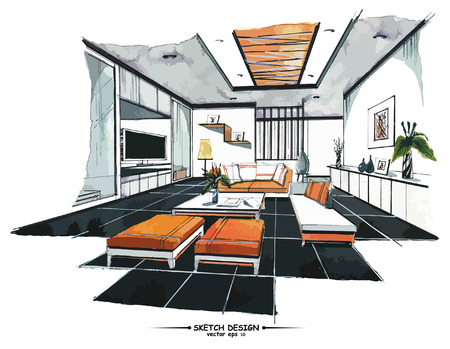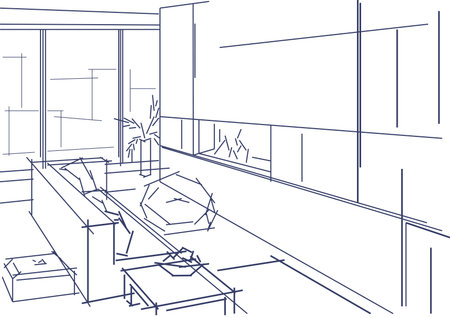Introduction to UCAS and Its Role in University Applications
When considering a degree in interior design within the United Kingdom, understanding the UCAS application system is absolutely vital. UCAS, or the Universities and Colleges Admissions Service, serves as the central hub for all undergraduate university applications across the UK. This well-established platform streamlines the process, allowing prospective students to submit one application that can reach multiple institutions simultaneously. For those interested in interior design, UCAS not only organises the admissions process but also ensures that applicants meet each university’s specific requirements. Its significance extends beyond mere administration—UCAS is integral to maintaining fairness, transparency, and efficiency throughout the UK’s higher education admissions landscape. By navigating UCAS properly, aspiring interior designers can present their qualifications, portfolios, and personal statements in a manner that aligns with British academic standards and expectations.
2. Key Dates and Application Timelines
Navigating the UCAS application system for interior design degrees in the UK requires careful attention to key dates and deadlines. Missing a crucial date could mean waiting another year to start your studies, so it’s vital to plan ahead. Below is a guide to help you understand when to begin preparing, important submission windows, and what happens if you apply late.
UCAS Application Timeline for Interior Design Courses
| Stage | Recommended Action | Date/Period |
|---|---|---|
| Research & Preparation | Begin researching courses and universities; draft personal statement; seek references. | March – September (year before entry) |
| UCAS Application Opens | Register on UCAS Hub; start completing your application form. | Early September (year before entry) |
| Main Application Deadline | Submit completed application including personal statement and references. | 25 January (year of entry) |
| Late Applications Considered | Some universities may consider applications received after the deadline, subject to course availability. | After 25 January – 30 June (year of entry) |
| Clearing Opens | If you have not received any offers or declined them, you can apply for available places through Clearing. | Early July onwards (year of entry) |
| Results Day & Confirmation | Receive your exam results; universities confirm offers based on your results. | August (year of entry) |
The Impact of Late Applications
While some institutions continue to consider late applications, especially through UCAS Extra or Clearing, applying after the main deadline can significantly reduce your options. Many interior design courses are highly competitive and may fill all places by the January deadline. Submitting your application on time gives you the best chance of securing interviews and receiving offers from your preferred universities.
Preparing for Deadlines: Top Tips
- Create a timeline: Mark all relevant UCAS deadlines in your calendar as soon as you decide to apply.
- Start early: Give yourself plenty of time to work on your portfolio, personal statement, and collect references.
- Monitor university-specific requirements: Some universities may set earlier deadlines for submitting portfolios or attending interviews, so always check their guidance carefully.
- Avoid last-minute submissions: Technical issues or missing documents can cause unnecessary stress close to the deadline—aim to submit at least a week early where possible.
Your Next Steps
The application process for an interior design degree in the UK is structured but competitive. By understanding the key dates and timelines outlined above, you’ll be well positioned to manage your application efficiently and maximise your chances of success.

3. How to Research Interior Design Programmes
When considering an application for an Interior Design degree through the UCAS system, it’s essential to thoroughly research your course options to ensure you make informed choices. The UK offers a wide range of universities and colleges, each with its own unique approach to interior design education. Begin by exploring the official websites of institutions that interest you; pay close attention to the course structure, module content, assessment methods, and opportunities for practical experience or industry placements.
Exploring Course Options
Look beyond the course title—some programmes may focus more on spatial design, while others integrate architecture or product design elements. Compare entry requirements carefully, as these can vary significantly between universities. Utilise resources like the UCAS website and university open days—either in person or virtual—to gain first-hand insights from tutors and current students.
Understanding Programme Content
Examine the curriculum in detail: does it include technical drawing, digital modelling, sustainable design, or client-led projects? Find out how much emphasis is placed on hands-on studio work versus theory-based learning. If portfolio submission is required, check what kind of work is expected so you can prepare accordingly.
Matching Your Interests to the Right Institutions
Every student has different strengths and career aspirations. Consider whether you prefer a creative arts environment or a more technical university setting. Think about location too—would you thrive in a bustling city like London or prefer a quieter campus elsewhere in the UK? Make a shortlist of courses that match your interests and ambitions, then use forums, league tables, and student reviews to refine your choices further. This careful groundwork will help ensure you select the best possible fit for your future in interior design.
4. Crafting a Strong Personal Statement
Your personal statement is a critical part of your UCAS application for interior design degrees in the UK. It offers you the opportunity to express your individuality, showcase your creative flair, and demonstrate why you are an ideal candidate for your chosen course. Admissions tutors look for applicants who not only have artistic ability but also the commitment and passion required to succeed in this dynamic field.
Tips for Writing a Compelling Personal Statement
- Highlight Creative Skills: Reflect on specific projects or experiences where you demonstrated originality and problem-solving abilities. Discuss techniques, software, or materials you are familiar with that are relevant to interior design.
- Showcase Work Experience: Whether it’s a placement at a local design studio, volunteering at an art event, or shadowing a professional, detail what you learned and how these experiences have shaped your understanding of the industry.
- Demonstrate Passion: Explain what draws you to interior design. Mention any exhibitions attended, books read, or personal projects undertaken that fuel your enthusiasm for the subject.
- Link Academic Achievements: Connect your coursework or academic achievements to relevant skills needed in interior design such as research, critical thinking, or technical drawing.
Structuring Your Personal Statement
| Section | Focus | Key Points |
|---|---|---|
| Introduction | Your motivation for studying interior design | Anecdote or inspiration that sparked your interest |
| Main Body | Skills & Experience | Creative projects, work placements, relevant coursework |
| Main Body | Personal Qualities & Ambitions | Problem-solving, teamwork, long-term goals in design |
| Conclusion | Why UK & This Course? | Your aspirations and reasons for choosing this university/course in the UK context |
Common Mistakes to Avoid
- Avoid generic statements like “I have always loved art.” Be specific and provide evidence.
- Don’t simply list achievements—explain their significance and what they taught you.
- Avoid clichés; focus on authentic reflections of your journey and ambitions.
- Steer clear of spelling or grammatical errors—proofread carefully as attention to detail matters.
Final Thoughts from UK Admissions Tutors
Tutors appreciate authenticity and self-awareness. Show that you understand the realities of studying interior design in the UK by referencing current trends or challenges in the sector. Remember, your personal statement should leave no doubt about your readiness and enthusiasm to contribute positively to both the course and the wider university community.
5. Portfolio Preparation and Supporting Materials
When applying for an interior design degree through the UCAS system in the UK, your portfolio is a crucial element that showcases your skills, creativity, and potential as a future designer. Admissions panels expect to see evidence of both technical ability and creative thinking, so it’s essential to curate your portfolio carefully.
Recommended Content for Your Portfolio
Your portfolio should demonstrate a broad range of work. Include examples of sketching, technical drawings, digital renders, and photographs of three-dimensional models or spatial explorations. If you have undertaken any personal projects, school assignments, or participated in design competitions, select the pieces that best represent your unique perspective and process. Adding brief annotations explaining your approach or inspiration behind each piece will help the panel understand your thought process.
Presentation Matters
How you present your portfolio is almost as important as what’s inside. Use a clear structure—organise your work chronologically or thematically so admissions tutors can follow your development as a designer. In the UK, digital portfolios are commonly accepted; ensure images are high quality and files are easy to navigate. Keep backgrounds plain to let your work stand out and avoid overcrowding pages with too many pieces at once.
Meeting Admissions Expectations
UK universities value originality and problem-solving skills in interior design applicants. Highlight projects where you identified a brief, developed ideas, experimented with materials, and reflected on outcomes. Don’t be afraid to include early sketches or development stages—these illustrate your creative journey. Finally, make sure you follow each university’s specific guidelines regarding portfolio format and content; failing to do so can affect your application’s success.
By carefully preparing your portfolio and supporting materials in line with UK expectations, you’ll be giving yourself the best possible chance to impress admissions panels and take the first step towards a rewarding career in interior design.
6. Understanding Offers, Interviews, and Next Steps
Types of Offers You May Receive
After submitting your UCAS application for an interior design degree in the UK, you’ll begin to receive responses from universities through your UCAS Track account. There are several types of offers to be aware of: a Conditional Offer means you must meet specific entry requirements (such as exam results) before your place is confirmed; an Unconditional Offer indicates that you have already met all the requirements and your place is secured; and occasionally, you may also receive a Rejection if your application hasn’t been successful. It’s important to carefully read the details of each offer so you know exactly what is expected of you.
Preparing for Interviews
Some UK institutions require applicants for interior design degrees to attend an interview or portfolio review. If you are invited for an interview, it’s essential to prepare thoroughly. Research the university and its course structure, review your personal statement, and practice discussing your portfolio pieces confidently. Be ready to explain your creative process, influences, and why you are passionate about interior design. UK interviews often have a conversational tone, so engage positively and ask thoughtful questions about the programme and university culture.
Your Next Steps After Receiving Responses
Once all your chosen universities have replied, you will need to make decisions on UCAS Track. You can select one offer as your Firm Choice (your first choice) and another as your Insurance Choice (your backup). Make sure to respond within the deadline set by UCAS, otherwise you may lose your offers. If you receive a conditional offer, keep track of any outstanding requirements such as exam results or English language qualifications. It’s also wise to start planning accommodation and researching student life at your preferred institution while waiting for final confirmation.
Navigating Extra, Clearing, and Adjustment
If you do not receive any offers or wish to change your choices after receiving results, UCAS provides options such as Extra, Clearing, and Adjustment. These processes allow students another opportunity to secure a place on an interior design course in the UK. Keep in close contact with admissions teams during this period and act quickly—places can fill up fast.
Summary
The final stage of the UCAS application process involves understanding the types of offers you might receive, preparing thoroughly for potential interviews, and making well-informed decisions about your future studies in interior design. Stay organised, proactive, and don’t hesitate to seek advice from school counsellors or university admissions staff if needed.

